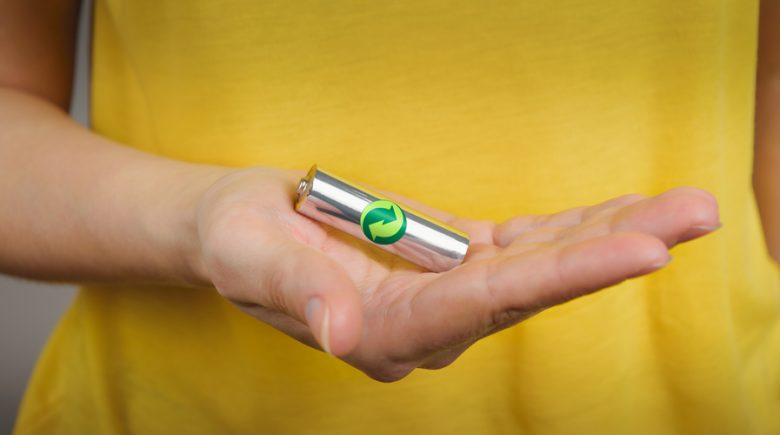For the most part, our planet relies on fossil fuels as its main source of energy, which emits greenhouse gases and increases the threat of global warming. There are many different types of reliable forms of renewable energy, which reduces the carbon footprint we leave on our planet, creates jobs, and can actually help relieve the national debt. The following list is made up of some of the most efficient and reliable forms of renewable energy.
Most Efficient and Reliable Forms of Renewable Energy
Wind Power
Wind power is currently considered one of the most reliable forms of renewable energy. Wind power, as the name would suggest, is electricity created using the wind or airflow. It utilizes wind turbines to capture kinetic energy, which is then used to generate electricity. There are 3 types of wind energy, which include utility-scale wind, distributed wind, and offshore wind. Wind turbines use large blades to capture the wind’s kinetic energy, which then spins the generator to produce electricity. Most wind turbines will typically stand at least 270 feet tall.
Advantages of Wind Power
One of the biggest advantages of wind power is how cost-effective it is, which is considered to be one of the lowest-priced energy sources. Wind power also helps create more jobs and enables industry growth. Becoming a windmill technician is currently one of the fasting growing jobs in the United States, which has the possibility of creating more than 800,000 jobs by 2040. Wind power is also an extremely clean energy source, which doesn’t pollute the air like other energy sources, such as, fossil fuels, coal, and natural gas. It’s also completely sustainable, which as long as the sun continues to shine, the wind will blow.
Solar Power
Solar power utilizes the sun’s energy, which is then turned into electricity. The sun releases small packets of energy, which are called photons. Photons have the ability to travel 93 million miles from the sun, which reaches the earth in less than 9 minutes. Every hour, the sun emits enough photos to power our planet for an entire year. Oftentimes, homeowners are reluctant to install solar panels, because of the high installation costs, but we have recently seen those costs rapidly dropping. Solar panels are made up of solar cells, which are made from silicon. The solar cells work as semiconductors. Each panel will feature a positive and negative layer and are used to create an electric field, which is similar to how a battery works.
Advantages of Solar Energy
There are many advantages and benefits of using solar power. Oftentimes, the installation process will pay for itself. Depending on where you live, you may be eligible for a tax credit, which will pay for 40% of the total system costs. When you take into consideration how much you spend on electricity annually, solar power can save you thousands of dollars annually. Another advantage of solar power is most solar panel manufacturers will include a 30-year warranty, which is currently the industry standard. Most importantly, solar energy helps save the environment. Solar energy is the cleanest form of energy, which helps reduce the carbon footprint we leave on our planet.
Geothermal Energy
Geothermal energy is produced by utilizing the heat, which comes from the sub-surface of the Earth. In order to harness Geothermal Energy, it requires a well to be dug, which is about a mile deep. The well must be dug deep enough to reach the geothermal pools under the Earth’s surface, which is used to drive turbines to power electric generators. There are 2 different types of geothermal power plants, which include dry steam and flash. Dry steam, which is the most common, as well as the oldest form of geothermal technology, uses steam to drive the turbine, while flash plants use hot water. Geothermal power is currently used in over 22 different countries, which the United States is considered its largest producer.
Advantages of Geothermal Energy
Geothermal energy is not only good for the environment; it’s also good for your wallet, which helps heat your home while providing energy. Unlike fossil fuels, which produce greenhouse gases, geothermal energy produces zero emissions. It can also be relied on 24 hours a day, regardless of weather conditions.
Hydroelectricity
Hydroelectricity is harnessed using flowing water, which is a timeless and completely renewable energy resource. It will often use a dam, the falling water will then cause the turbines to rotate, which is then converted into electricity. The size of the dam, along with the water flow will dictate the amount of energy the turbines produce. The largest hydropower dam in the United States is located in Washington, which is 1099 ft tall and produces more than 6,400 MW of electricity daily.
Advantages of Hydroelectricity
It’s hard to imagine a greener form of energy, other than water, which of course doesn’t pollute the air like fossil fuels, such as, coal and natural gas. Hydroelectricity can be produced independently in your home state, which doesn’t require having to rely on international fuel sources. Hydroelectricity has the ability to quickly power an entire grid in minutes, which is often used to distribute power during a major outage. It can also be used to supply irrigation and help manage flooding problems.
Tidal Power
Tidal energy is nothing new, which happens to be one of the oldest forms of energy. It works by converting the friction generated by the tide into electricity. Tidal energy is often featured in areas, which are located along the coastline. There are 3 different types of tidal energy technologies, which include tidal fences, barrages, and turbines. Turbines, which are the most widely used, are placed underwater to catch the tides winds. While, tidal fences operate similar to giant turnstiles, and barrages, which is the most efficient tidal energy source is generated by the change between high and low tides. It will often feature a dam to utilize energy.
Advantages of Tidal Power
When it comes to renewable energy sources, it doesn’t get much better than tidal power, which is easy to predict and completely green. It is also effective at low speeds. It’s important to understand that water is nearly 1000 times denser than air, which means water has the ability to generate electricity at relatively low speeds.
For the most part, our planet relies on fossil fuels as its main source of energy, which emits greenhouse gases and increases the threat of global warming. There are many different types of reliable forms of renewable energy, which reduces the carbon footprint we leave on our planet, creates jobs, and can actually help relieve the national debt. The following list is made up of some of the most efficient and reliable forms of renewable energy.
Most Efficient and Reliable Forms of Renewable Energy
Wind Power
Wind power is currently considered one of the most reliable forms of renewable energy. Wind power, as the name would suggest, is electricity created using the wind or airflow. It utilizes wind turbines to capture kinetic energy, which is then used to generate electricity. There are 3 types of wind energy, which include utility-scale wind, distributed wind, and offshore wind. Wind turbines use large blades to capture the wind’s kinetic energy, which then spins the generator to produce electricity. Most wind turbines will typically stand at least 270 feet tall.
Advantages of Wind Power
One of the biggest advantages of wind power is how cost-effective it is, which is considered to be one of the lowest-priced energy sources. Wind power also helps create more jobs and enables industry growth. Becoming a windmill technician is currently one of the fasting growing jobs in the United States, which has the possibility of creating more than 800,000 jobs by 2040. Wind power is also an extremely clean energy source, which doesn’t pollute the air like other energy sources, such as, fossil fuels, coal, and natural gas. It’s also completely sustainable, which as long as the sun continues to shine, the wind will blow.
Solar Power
Solar power utilizes the sun’s energy, which is then turned into electricity. The sun releases small packets of energy, which are called photons. Photons have the ability to travel 93 million miles from the sun, which reaches the earth in less than 9 minutes. Every hour, the sun emits enough photos to power our planet for an entire year. Oftentimes, homeowners are reluctant to install solar panels, because of the high installation costs, but we have recently seen those costs rapidly dropping. Solar panels are made up of solar cells, which are made from silicon. The solar cells work as semiconductors. Each panel will feature a positive and negative layer and are used to create an electric field, which is similar to how a battery works.
Advantages of Solar Energy
There are many advantages and benefits of using solar power. Oftentimes, the installation process will pay for itself. Depending on where you live, you may be eligible for a tax credit, which will pay for 40% of the total system costs. When you take into consideration how much you spend on electricity annually, solar power can save you thousands of dollars annually. Another advantage of solar power is most solar panel manufacturers will include a 30-year warranty, which is currently the industry standard. Most importantly, solar energy helps save the environment. Solar energy is the cleanest form of energy, which helps reduce the carbon footprint we leave on our planet.
Geothermal Energy
Geothermal energy is produced by utilizing the heat, which comes from the sub-surface of the Earth. In order to harness Geothermal Energy, it requires a well to be dug, which is about a mile deep. The well must be dug deep enough to reach the geothermal pools under the Earth’s surface, which is used to drive turbines to power electric generators. There are 2 different types of geothermal power plants, which include dry steam and flash. Dry steam, which is the most common, as well as the oldest form of geothermal technology, uses steam to drive the turbine, while flash plants use hot water. Geothermal power is currently used in over 22 different countries, which the United States is considered its largest producer.
Advantages of Geothermal Energy
Geothermal energy is not only good for the environment; it’s also good for your wallet, which helps heat your home while providing energy. Unlike fossil fuels, which produce greenhouse gases, geothermal energy produces zero emissions. It can also be relied on 24 hours a day, regardless of weather conditions.
Hydroelectricity
Hydroelectricity is harnessed using flowing water, which is a timeless and completely renewable energy resource. It will often use a dam, the falling water will then cause the turbines to rotate, which is then converted into electricity. The size of the dam, along with the water flow will dictate the amount of energy the turbines produce. The largest hydropower dam in the United States is located in Washington, which is 1099 ft tall and produces more than 6,400 MW of electricity daily.
Advantages of Hydroelectricity
It’s hard to imagine a greener form of energy, other than water, which of course doesn’t pollute the air like fossil fuels, such as, coal and natural gas. Hydroelectricity can be produced independently in your home state, which doesn’t require having to rely on international fuel sources. Hydroelectricity has the ability to quickly power an entire grid in minutes, which is often used to distribute power during a major outage. It can also be used to supply irrigation and help manage flooding problems.
Tidal Power
Tidal energy is nothing new, which happens to be one of the oldest forms of energy. It works by converting the friction generated by the tide into electricity. Tidal energy is often featured in areas, which are located along the coastline. There are 3 different types of tidal energy technologies, which include tidal fences, barrages, and turbines. Turbines, which are the most widely used, are placed underwater to catch the tides winds. While, tidal fences operate similar to giant turnstiles, and barrages, which is the most efficient tidal energy source is generated by the change between high and low tides. It will often feature a dam to utilize energy.
Advantages of Tidal Power
When it comes to renewable energy sources, it doesn’t get much better than tidal power, which is easy to predict and completely green. It is also effective at low speeds. It’s important to understand that water is nearly 1000 times denser than air, which means water has the ability to generate electricity at relatively low speeds.



